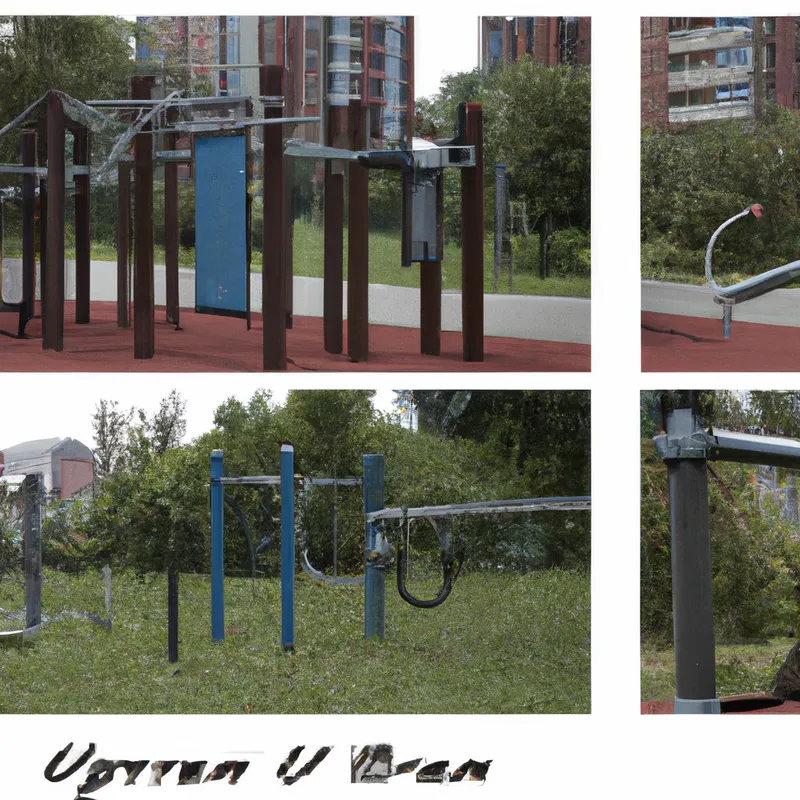Discover Benefits of Fitness Parks Over Traditional
Urban Fitness Parks vs. Traditional Parks: A Comparative Study
Cities grow, increasing the demand for functional outdoor spaces. Urban fitness parks and traditional parks serve distinct purposes. Traditional parks provide serenity, while fitness parks promote active lifestyles. This post explores their differences, benefits, and how they enhance urban living.
Understanding Urban Fitness Parks
Urban fitness parks feature specific exercise equipment. You can find pull-up bars, balance beams, and cardio machines. These parks encourage physical activity and community engagement. They make fitness accessible to all ages.
Traditional parks offer green spaces, walking paths, and playgrounds. They create environments for relaxation and leisure. Families often gather for picnics, sports, and social events in these parks.
Equipment Availability
Urban fitness parks typically provide specialized equipment. Users can perform strength training and cardio exercises. Workout stations motivate people to stay active.
Traditional parks usually lack this equipment. They focus more on natural landscapes. However, some traditional parks include basketball courts or soccer fields, promoting team sports.
Community Engagement
Fitness parks foster community. They attract groups who work out together. This shared experience motivates individuals to achieve fitness goals. Fitness parks often host classes and events, bringing people together.
Traditional parks serve as social hubs. Families and friends gather for various activities. Community engagement exists but doesn’t focus solely on fitness. People relax, enjoy nature, or participate in casual sports.
Tips for Choosing the Right Park
Choosing between an urban fitness park and a traditional park can be challenging. Here are tips to help you decide.
Assess Your Fitness Goals
Consider your fitness goals first. If you want to build strength or improve cardiovascular fitness, a fitness park is ideal. Dedicated equipment helps you achieve targeted results.
If your goal is to enjoy nature, a traditional park suits you better. You can jog, walk, or play sports with friends.
Consider Accessibility
Evaluate the accessibility of both park types. Urban fitness parks may sit near busy areas, making them convenient for quick workouts. Traditional parks might offer a quieter atmosphere.
Think about your daily routine. If you can easily access a fitness park, you might work out regularly. If you prefer peace, a traditional park may suit you best.
Look for Amenities
Examine the amenities in each park. Fitness parks often include rest areas, water fountains, and shaded spots. These features enhance your workout experience.
Traditional parks may offer picnic tables, walking trails, and playgrounds. Consider which amenities matter most to you for a well-informed decision.
Benefits of Each Park Type
Both urban fitness parks and traditional parks offer distinct benefits. Understanding these advantages helps you choose the right environment for your lifestyle.
Urban Fitness Parks
1. **Enhanced Physical Activity**: Fitness parks promote regular exercise and an active lifestyle.
2. **Social Interaction**: These parks create opportunities for socializing with like-minded individuals.
3. **Structured Environment**: The organized layout helps you focus on your workout and follow a routine.
Traditional Parks
1. **Natural Beauty**: Traditional parks offer lush greenery and scenic views, providing a calming atmosphere.
2. **Variety of Activities**: You can engage in various activities, from sports to leisurely walks, keeping your routine interesting.
3. **Family-Friendly Environment**: Traditional parks cater to families, offering playgrounds and open spaces for children.
Conclusion
Urban fitness parks and traditional parks each have unique advantages. Fitness parks provide specialized equipment and promote active lifestyles. They also foster community through group workouts and events. Traditional parks offer serene environments for relaxation and diverse activities.
When choosing a park, consider your fitness goals, accessibility, and amenities. Each park type enhances your lifestyle in different ways. Combining visits to both parks can create a well-rounded outdoor experience. Embrace the benefits of both urban fitness parks and traditional parks to elevate your urban living experience.
Below are related products based on this post:
FAQ
What are the main differences between urban fitness parks and traditional parks?
Urban fitness parks are designed with specific exercise equipment and promote physical activity, while traditional parks focus on providing serene environments for relaxation and leisure activities. Fitness parks encourage active lifestyles and community engagement, whereas traditional parks cater to social gatherings and family outings.
How can I decide which type of park is better for me?
To determine which park suits you best, assess your fitness goals, consider the accessibility of each park type, and look for the amenities that matter most to you. If you’re focused on strength training or cardio, an urban fitness park may be ideal. If you prefer enjoying nature and casual activities, a traditional park may be the better choice.
What benefits do urban fitness parks offer?
Urban fitness parks promote enhanced physical activity, provide opportunities for social interaction with like-minded individuals, and offer a structured environment for workouts. These parks are designed to motivate users to stay active and help them achieve their fitness goals.















Post Comment